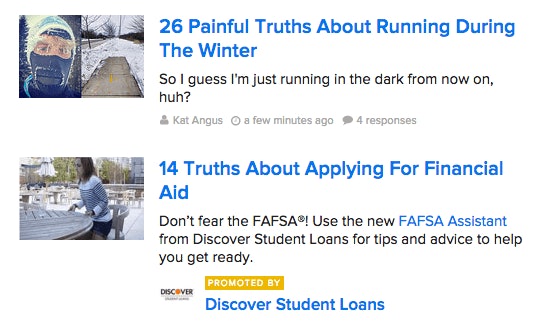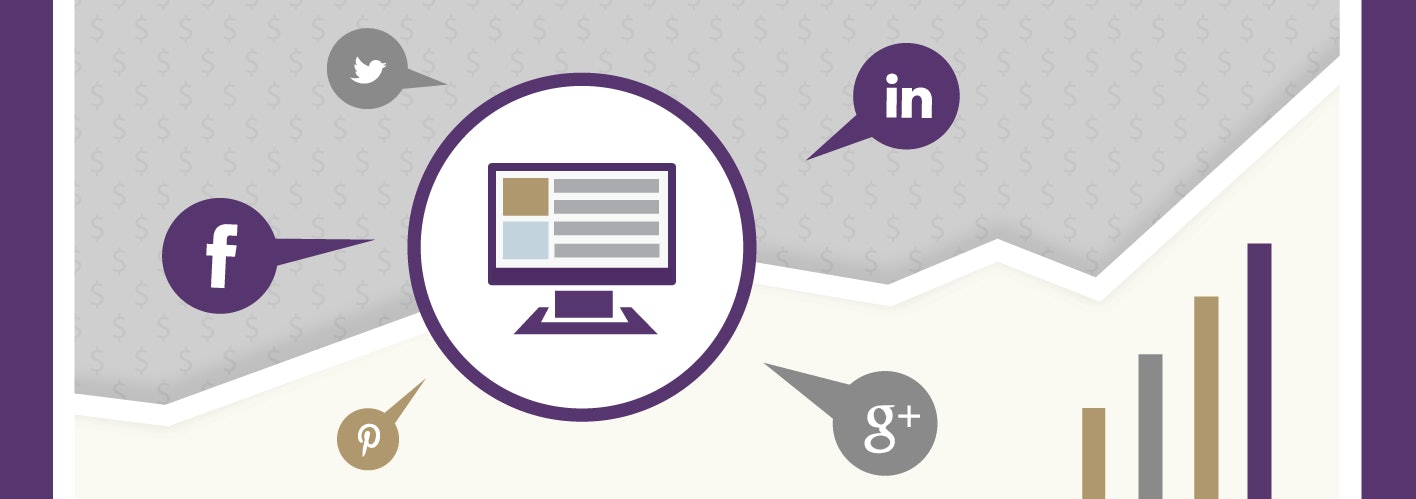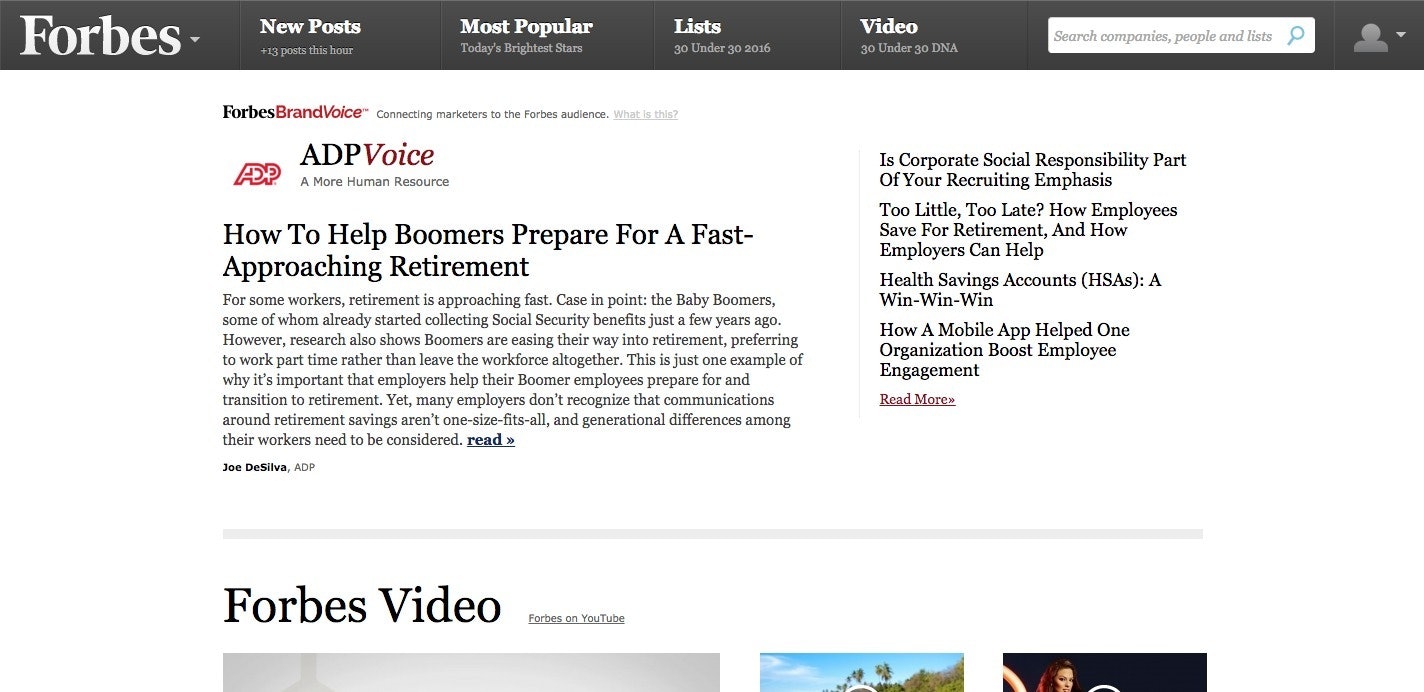Nobody likes ads. Advertisers hate to admit it, but it’s true in almost all cases. So you hide them now, one way or the other – and one method of presenting advertising to consumers in ways they are interested in is quickly growing in stature. Native advertising, sponsored content, advertorials: whatever name you most prefer, this medium is quickly becoming more and more common.
But does it work? Is it worth the cost? And for businesses big and small, how do native advertising and social media work together?
What is Native Advertising?
The first question to answer is what exactly native advertising is, and luckily it’s a pretty easy question to answer by comparing it to content marketing. In content marketing (or inbound marketing), a marketer produces something – a blog post, a white paper, an infographic – that answers a question a customer might ask, or teaches a customer something they would be interested to learn. The idea is that instead of forcing people to look at advertising they don’t want to see, you create content that they want to seek out and then share it liberally.

Native advertising takes that same idea but changes the venue. Rather than a business hosting the content on their own site, native advertising is hosted by a single publisher – typically an outlet that would have advertising, but also creates its own content. Buzzfeed and Forbes are two top examples of sites that frequently host sponsored content.
The main benefit native advertising provides is audience. If you choose the right publisher, you’re almost guaranteed to get a lot of eyes on your content, and they’re exactly the eyes that you want. An investment firm partners with Forbes. A hip technology company partners with Buzzfeed. Smaller, more targeted sites work too – if you want your IT firm to get noticed, try to get your content on Computerworld or Tech Republic, for example. One way or the other, you’re going to get noticed.
Additionally, native advertising offers a way for advertisers to beat ad blockers, particularly on mobile. When Apple added ad blocking to iOS 9, joining Android in providing the service, it meant nearly 97 percent of mobile users can now block ads on mobile sites. Considering the fact that industry averages show a majority of readers (55 percent) now accessing content via mobile, that’s huge. Native advertising cannot be blocked, since it’s generally treated as normal content.
The Other Shoe Drops
Native advertising is not perfect though. Nothing is, after all. One issue – actually, an issue that many advertisers can experience – is cost. For a top-tier partner like TIME, the price can run as high as $200,000 for a campaign. The average cost for a top-level partner is around $55,000. For lower-level publishers you can get a rate as low as $50, or up to $8,000. But to get the most benefit out of native advertising, a double-digit spend isn’t going to cut it.
Scale is another issue. Content marketing can be pushed out on a number of channels, and get organic coverage from a variety of outlets. Native advertising is limited to one, though, and even if it’s an outlet that gets millions of page views, that doesn’t guarantee that your content will be seen, or that readers will engage with you.
Additionally, Google isn’t a big fan of native advertising. It considers advertorials to be more advertisement than real content, and because of that links from native ads don’t pass value and don’t improve your search rankings. That means that unless you explicitly get business directly from a native ad, you can’t really get a handle on your ROI. At best, you need to diversify your options.
Additionally, regulations are starting to affect native advertising, and it’s tough to tell exactly how the burgeoning medium will develop to fit them. The Federal Trade Commission issued guidelines in December saying:
…regardless of the medium in which an advertising or promotional message is disseminated, deception occurs when consumers acting reasonably under the circumstances are misled about its nature or source, and such misleading impression is likely to affect their decisions or conduct regarding the advertised product or the advertising.
They also said that “clear and prominent” disclosures must be made when outlets post native ads, and that “disclosures must be understandable.” If that reminds you a bit of “parental advisory” stickers on CDs in the 90s, well, you’re not alone.
Who Does Native Advertising Help?
With regulatory creep, relatively small scale, and high costs, is native advertising actually worthwhile for smaller businesses? After all this you may be surprised to find out that the answer’s actually yes. You just need to do it right. What does that mean?
B.J. Hinshaw in AllBusiness has a few tips, and they hold up:
- “Think win-win, or no deal.” There has to be a good fit, a good match between your business and the content host that benefits both sides.
- “Budget sensibly.” Don’t waste money on something that’s not going to get you results. Find your price range, and stay there.
- “Don’t betray the reader.” This is not a place for you to sell a product. This is where you show your expertise, and deliver value to the reader. Do that, and they’ll look to you when they’re ready to buy.
- “Market your content.” No matter how much reach you get from your content host, you can’t just let it sit and hope people will see it. Tweet about it, share it on Facebook. Make sure it’s in front of as many eyes as possible, in as many ways as possible.
With the right partner, the right content, and the right promotion, native advertising can work for pretty much any business.
Social Media and Native Advertising
Native advertising isn’t only built for content-heavy news websites. Since native ads follow the form and function that you would expect in whatever medium you choose, they can blend in and deliver your content pretty much everywhere. Native advertising can be adjusted to fit pretty much any medium that can hold content – and social media is a great place to get started.
A huge benefit to native advertising on social media is that it negates a couple of the issues that are inherent to sponsored content elsewhere – reach, and cost. In part because it’s a performance-based buy, a sponsored tweet or Facebook post boost will be much cheaper than sponsored content elsewhere, particularly compared to getting your content on Buzzfeed or the like. And with over 200 million active Twitter users as well as over a billion and a half active Facebook users, there are a lot of people from all walks of life to reach. Of course, while 77 percent of Twitter users have interacted with a promoted tweet in some way, only 6 percent have retweeted, liked, or responded to a promoted tweet – so your mileage may vary.
Mastering the Perfect Promoted Tweet
Let’s talk about “promoted tweets” first. Promoted tweets act the same as regular tweets – they can be responded to, they can be retweeted and liked, and more. The only difference is that Twitter users who don’t follow you will be able to see the tweet in their timelines. It’s a way to prompt engagement among your followers as well as getting your tweet and content in front of new people. Twitter recommends using promoted tweets either to “drive a particular action,” like promoting a sale or sharing a content landing page, or to “drive awareness for your business” around important events. You can even target specific audiences to make sure messages are seen by the right people.
It’s effective, too. Nielsen reports a 22 percent increase in message association from exposure to a promoted tweet, even if the reader doesn’t directly engage with the content. Promoted tweets lead to a 10 percent rise in memorability for your brand or product, especially when tweets are seen more than once. And engagement leads to a 30 percent rise in brand favorability and 53 percent spike in purchase intent. This case study by DigitalMarketer.com dives a bit deeper into what a single promoter can get out of a Twitter campaign, as well. One way or the other, the potential for a high return on your Twitter investment is clear.
Facebook: Ads vs. Promoted Content
Facebook offers two different ways to share content – one a bit more traditional, and one that’s much more in line with the rest of the promoted content options we’ve discussed so far. The first is the straight advertisement, which is separate from the regular feed of posts and stories that users see.
A boosted Facebook post, though, acts like a typical post. It shows up in the news feed like a normal post because it is a normal post – you simply choose a post to boost, pick an audience and a budget, and you’re all set. The post appears in the feeds of people who match your audience whether they’ve liked your page or not, and they can engage with you as usual.
The return on your Facebook investment is a bit less certain than on Twitter, though. Since Facebook is constantly changing and tweaking things, it can be tough to get a precise grasp on what works and what doesn’t, and this is no exception. People seem to either really love it, or really hate it. An example of the latter is Allen Underwood, writing here for Untethered Income. Underwood boosted a post and did get results, but called out some issues he ran into with expectations (set by Facebook) and while there was some success, there wasn’t enough to make it worth the fuss.
On the other hand, Scott Ayres for Post Planner had better results. Scott spent $20 on boosting a post which he was able to link directly to $2,400 in sales for his small business. His average organic reach almost quadrupled. His page got 22 new Likes; considering the page had fewer than 1,000 before the post, that’s a pretty good return. Overall, Ayres is very positive about the experience, and has the numbers to prove it. Betsy Kent here tells the story of her own experience boosting a Facebook post, where an investment of only $1 was surprisingly effective. Rebecca Coleman tells the story of her own experience investing $5 in Facebook boosting, which led to about five times the reach of her original post.
So what’s the answer? Really, it depends on you. The cost is small enough that a little bit of trial and error is probably okay. But make sure you know exactly what you want to get out of the boosted post in terms of results, choose and target your audience well, and only boost good content. Otherwise, you’re practically guaranteed to fail.
Make your Native Advertising Valuable
Really, that advice goes for all promoted content, not just on Facebook or even generally on social media. For a promoted post to work in any setting or medium, it has to be something that your intended audience wants to see. It has to be interesting. It has to be valuable. People hate ads. So don’t give them ads – give them sponsored content. You’ll be glad you did.






